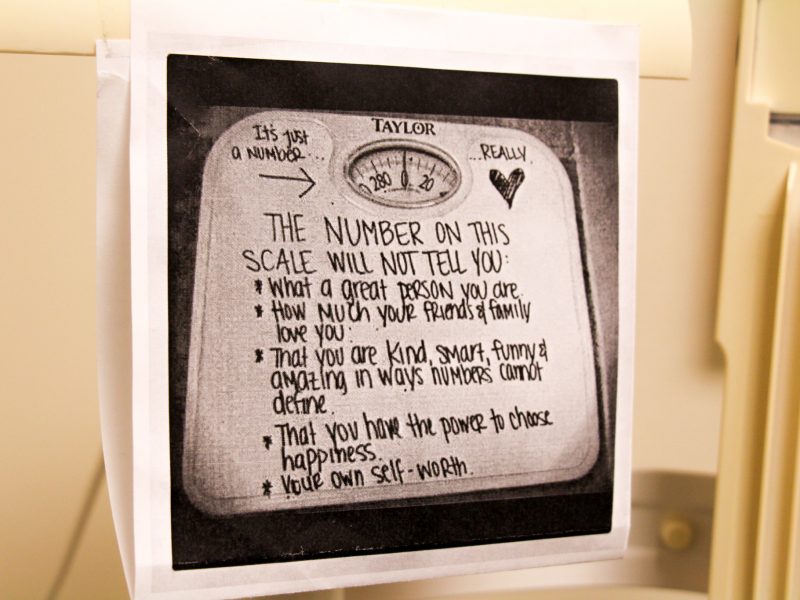National Nutrition Month: 10 Tips to Achieve a Healthy Lifestyle
By Roberta Tripp, MS RD LDN, MHS Nutritionist
As one of three registered dietitians at Milton Hershey School, I work with students, parents/sponsors, and faculty on creating healthy habits to become their greatest selves. In order to continue providing up-to-date information to our community, we read nationwide publications to stay current and share valuable knowledge as thought leaders in the field.
In the May 2018 issue of the American Psychological Science Agenda, Dr. Traci Mann, Ph.D., was featured in an article titled, “Why Do Dieters Regain Weight?” This article intrigued me to look into Dr. Mann and her studies. She is a professor of psychology at the University of Minnesota and started the Health and Eating Lab in 2007. Through her research, Dr. Mann has created “Smart Regulations Strategies,” which are proven mental strategies for reaching a healthy weight.

The knowledge gained from Dr. Mann’s research allowed me to implement beneficial strategies into my teachings here at MHS. Healthy habits can turn into a healthy lifestyle.
In honor of National Nutrition Month, MHS nutritionists share 10 tips to achieve a healthy weight and diet through mental strategies:
-
Eat Vegetables First
According to research conducted by Dr. Mann, vegetable consumption in elementary school students increased when the vegetables were served first in isolation. When you start every meal with a vegetable, there is a good chance you will leverage a simple rule people have evolved to follow: “If I see a food, I eat it.”
-
Make Healthy Food Accessible
Make your healthy foods easy to notice, grab, and eat. For example, put them in the front of your refrigerator. Buy produce that is pre-sliced or pre-cut so that there is as little prep work as possible and you can get started on cooking faster.
-
Make Unhealthy Food Inconvenient
Make foods that are not healthy hard to notice and eat. Stick them in the back of the refrigerator or pantry. Put them in containers that are not see-through.
-
Cook More
According to a 2017 study published in the “International Journal of Behavioral Nutrition and Physical Activity,”, individuals who ate home-cooked meals five or more times per week were 28 percent less likely to be overweight than those who ate at home fewer than three times per week. The researchers found that those who dined at home ate more fruits and vegetables, too.
-
Create Obstacles to Tempting Snacks
Take small amounts from the container and put them in a small dish. Then, close the container and put it away. If you want more, you’ll have to repeat the whole process. When you use a smaller plate and fill it up, you think you are eating more food, which tricks you into feeling fuller sooner.
-
Give Healthy Foods New Adjectives
Don’t think of healthy foods as healthy! That will just make you eat less of them. Think about them in other ways that you find appealing—such as how cold and refreshing a fresh fruit salad tastes straight from the refrigerator on a hot summer day; how tart and crispy an apple is; or how fulfilling it is to eat tomatoes you planted yourself.
-
Think in the Abstract
You can’t always control what’s in front of you. When confronted with something tempting, try to think about it abstractly rather than focusing on how good it looks or smells. A study found that children asked to wait a while to eat a marshmallow in front of them resisted temptation better when they thought of the marshmallow as “a puffy white cloud” than a yummy treat.
-
Know Your Weaknesses
Create a plan to get around your weaknesses. Do you always pick up a candy bar when you are in the checkout line of the supermarket? Seek out an aisle without candy or order your groceries online. Turn these avoidance strategies into habits that you do all the time without even thinking.
-
Savor Your Food
Whatever you are eating, pay attention to how wonderful it is. Don’t be distracted by what’s online—enjoy the moment.
-
Comfort Food is a Myth
People seek out their own “comfort foods” when in negative moods, and they believe that these foods rapidly improve their mood. However, a study done in the University of Minnesota Health and Eating Lab in 2014 showed that individuals will get the same results—a steady decrease in negative mood—from eating another palatable food, a neutral food, or nothing at all. Just knowing this could stop you from diving into a pint of ice cream or a pan of brownies the next time you feel down.
Looking for more ways to help you “Personalize Your Plate?” Check out the Academy of Nutrition and Dietetics website.

